We at BuzzFeed News are proud to bring you a range of stories, from the serious to the lighthearted. To help keep it all free, become a member and sign up for our newsletter, Outbreak Today.
Last June, I toured a house so big, one lap around it made me tired. The 12-car garage had a waterfall inside, the closets were the size of three average New York City apartments, there was a spa, a wine cellar, and a rooftop terrace. The house had an unobstructed view of Los Angeles, and was so high atop the Hollywood Hills that it made the other mansions nearby look laughably miniscule in comparison. It wasn’t my house and never would be, but I started to dream about what owning it would be like. Oh, your home doesn’t have a wraparound infinity pool or an elevator? How grotesssssque.
The person giving me this tour of one of the most expensive homes in the history of the Hollywood Hills was Adam DiVello, the executive producer of the iconic 2000s shows Laguna Beach and The Hills. I followed his crew as they scouted locations for the second and third seasons of Netflix’s Selling Sunset last June, and then again again in November for a couple of days of filming. Selling Sunset is DiVello’s newest reality offering, a sleeper hit that focuses on a group of seven women who work at the Oppenheim Group in West Hollywood, a realty agency that specializes in selling very, very expensive homes.
During our walkthrough, we wandered into the master bedroom, where we tried to figure out if the bed was a queen or a California king. “It looks small, doesn’t it?” DiVello said. But the room was so enormous that a bed that could fit four people still looked doll-sized in comparison.
The house, with its five bedrooms, nine (nine!) bathrooms, and home theatre, was listed at the time for around $43 million, and potentially came with a million-plus commission for whoever was able to sell it. (It sold for less than the asking price, which means that maybe it could’ve been mine, give or take a few million.) For most of the show’s first season, the 20,000 square foot behemoth was still being built, and it was, at the time, the most expensive listing for the Oppenheim Group. It was also the perfect setting for an Adam DiVello production.

The DiVello brand is built on nearly impossible aspirations, often with a cast of beautiful (but often quite bland) white women fighting over (usually) very low-stakes issues. Like most reality TV, the arguments are frequently petty, often rooted in little miscommunications, the conflict largely passive-aggressive, but DiVello knows to add just enough high-end appeal to make his shows feel elevated and compelling. (His shows aren’t even called reality TV — instead they’re seen as docusoaps.) His brand of television is a lot like the house he was showing me: visually stunning, unaffordable, not really my style — and yet, I would happily be buried in the kitchen.
With 2004’s Laguna Beach, DiVello brought us into a wealthy Orange County enclave full of beautiful teenagers living largely unattainable lives. On The Hills, which premiered two years later, DiVello plucked the most relatable young woman from Laguna Beach and followed her — and some choice Laguna castmates — as they embarked on a new phase of their lives in Los Angeles. With Selling Sunset, he’s once again letting us commoners into a glamorous setting, but this time it’s the rarified world of high-end real estate that somehow feels wholly different from all the other real estate shows crowding cable TV.
His brand of television is a lot like the house he was showing me: visually stunning, unaffordable, not really my style — and yet, I would happily be buried in the kitchen.
It’s a show built for binging, even if it’s hard to encapsulate why. Selling Sunset is muted in contrast to other reality programming: The cast is hardly as bombastic as any of the women on a Real Housewives franchise, there’s none of that can-do attitude from other home makeover shows, no inspirational music that swells over a bathroom renovated on the cheap. There’s no homebuyer fretting over their budget or dozens of people trying to outbid them on a fixer-upper, because the competition over a $43 million home is, ultimately, slim. There are plenty of other reality shows focused on trying to eke out home improvements on a tight budget, or well-heeled women behaving badly, or even other shows about expensive homes for sale, but rarely do you actually want to live in those houses or be around those people. (Sorry, Kyle and Dorit, but I would rather eat a pile of nails than be either of your friends.) But when Adam DiVello is producing a reality TV world, it’s hard not to wish you could spend a week or lifetime in it.
That’s the beauty of his shows: You feel, on some level, that if you tried hard enough and had the right stylists and doctors, maybe there could be a possibility that you too could live in his world. These are not the girls next door — unless you live in the Hollywood Hills. But despite the fact that all the women who inhabit the DiVello universe are in a different stratosphere of wealth, beauty, and access, there’s still something relatable about them. Unlike other shows about the rich, they’re not produced to be caricatures that veer into absurdity; rather, they’re just normal people who wear feathered cocktail dresses to their boss’s casual dinner.
But if you can’t be them — which, to be clear, you absolutely can’t — the next best thing is to watch them in action.
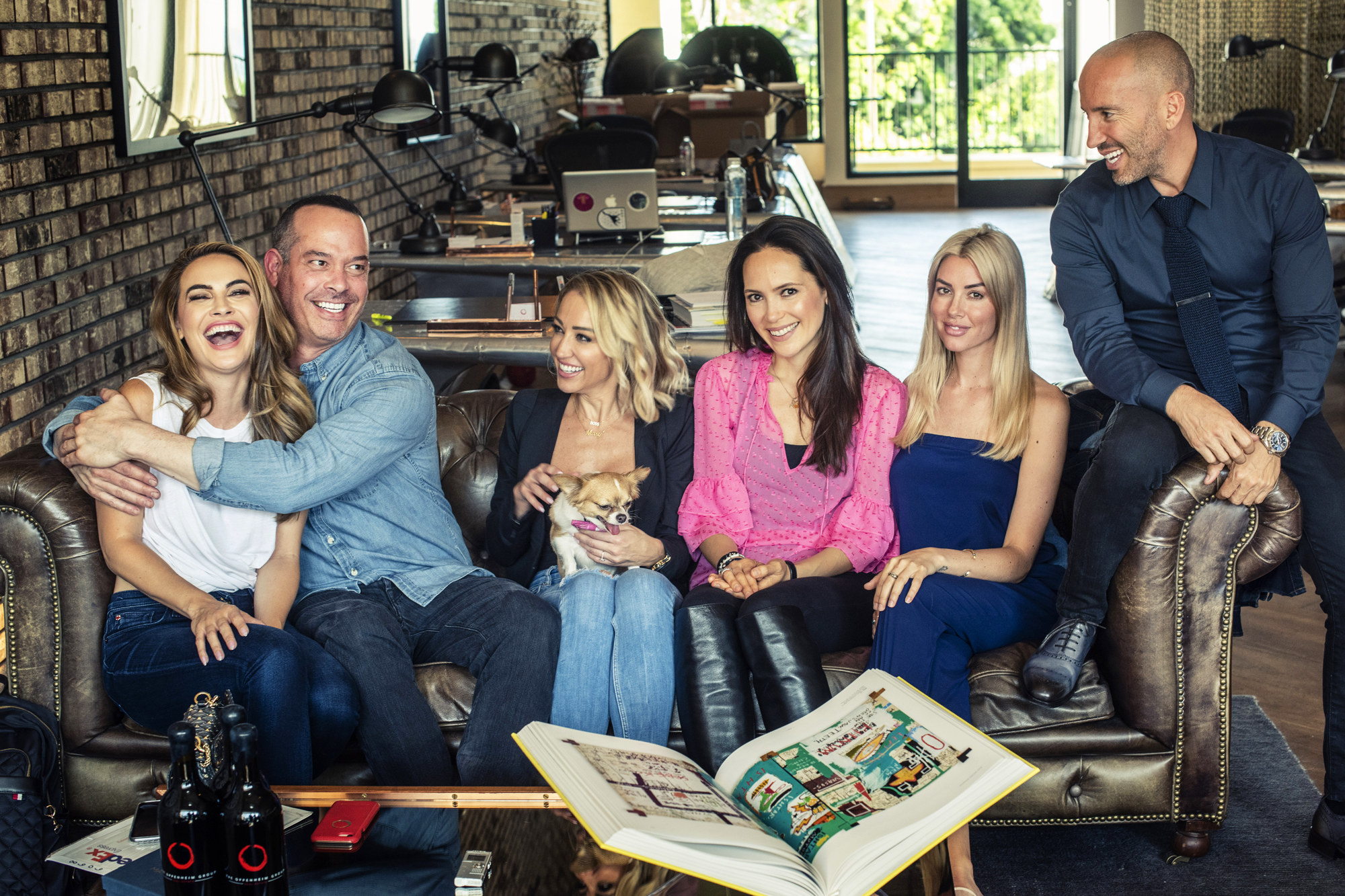
It’s clear that Adam DiVello’s personal aesthetic matches up perfectly with what he produces on TV. Tall and broad, he’s got the whitest, straightest set of teeth I’ve ever seen and the cleanest sneakers, and his clothes are always without a single wrinkle. When he peels out of his pristine, black Range Rover, he looks like money, effortlessly. He’s hardly aged from when he did red carpets with the cast of The Hills more than 10 years ago. He’s put together, but understated about it. While Andy Cohen — who helms the fun if sometimes trashy Housewives franchise — is a big personality with grandiose style and an outsize social media presence, DiVello is as subtle as his shows. He has a sparse Instagram, a dormant Twitter account, and he never discusses his personal life.
And though he won’t say it, he’s already had more success in reality television programming than most people have across the entire span of their careers. He was a largely unknown MTV development executive when he helped develop Laguna Beach in 2004. “Liz Gateley had come with the idea to do a reality 90210,” DiVello told me over burgers and salmon grain bowls last June in Hollywood. “So I flew out to meet with high schools out here.”
The Hills was a natural sequel, following perennial nice girl Lauren Conrad as she moved to Hollywood to try to make it in the fashion industry. 2008’s The City followed Lauren’s friend, Whitney Port — the walking Ralph Lauren ad from The Hills cast — when she briefly moved to New York. Apart from these three shows, all organically connected, DiVello also executive produced 2018’s Music City, which ran on CMT for two seasons. Most of his shows have been bona fide hits, namely Laguna Beach and The Hills, which created not just its own kind of reality show subindustry, but also helped form the it girl paparazzi scene of the early aughts. If you’re a reality television fan, Lauren screaming “You know what you did!” to her former best friend Heidi Montag at the dimly lit Les Deux in Hollywood has to be ingrained in your memory for life. At the time, there was nothing like it.
While there might not ever be anything like the generation-defining success of those two franchises again, DiVello is still aiming to duplicate it. Instead of returning to the same well that brought him victory before, he’s aging and evolving with his audience. “With Laguna Beach, I was still in my twenties, so that felt right to me,” said DiVello. But now he’s interested in thirtysomethings as they build their careers and relationships. “Certainly the real estate world to me is a really exciting world. I’m a homeowner and I go to open houses constantly. That probably wasn’t what I was thinking about in my twenties.”
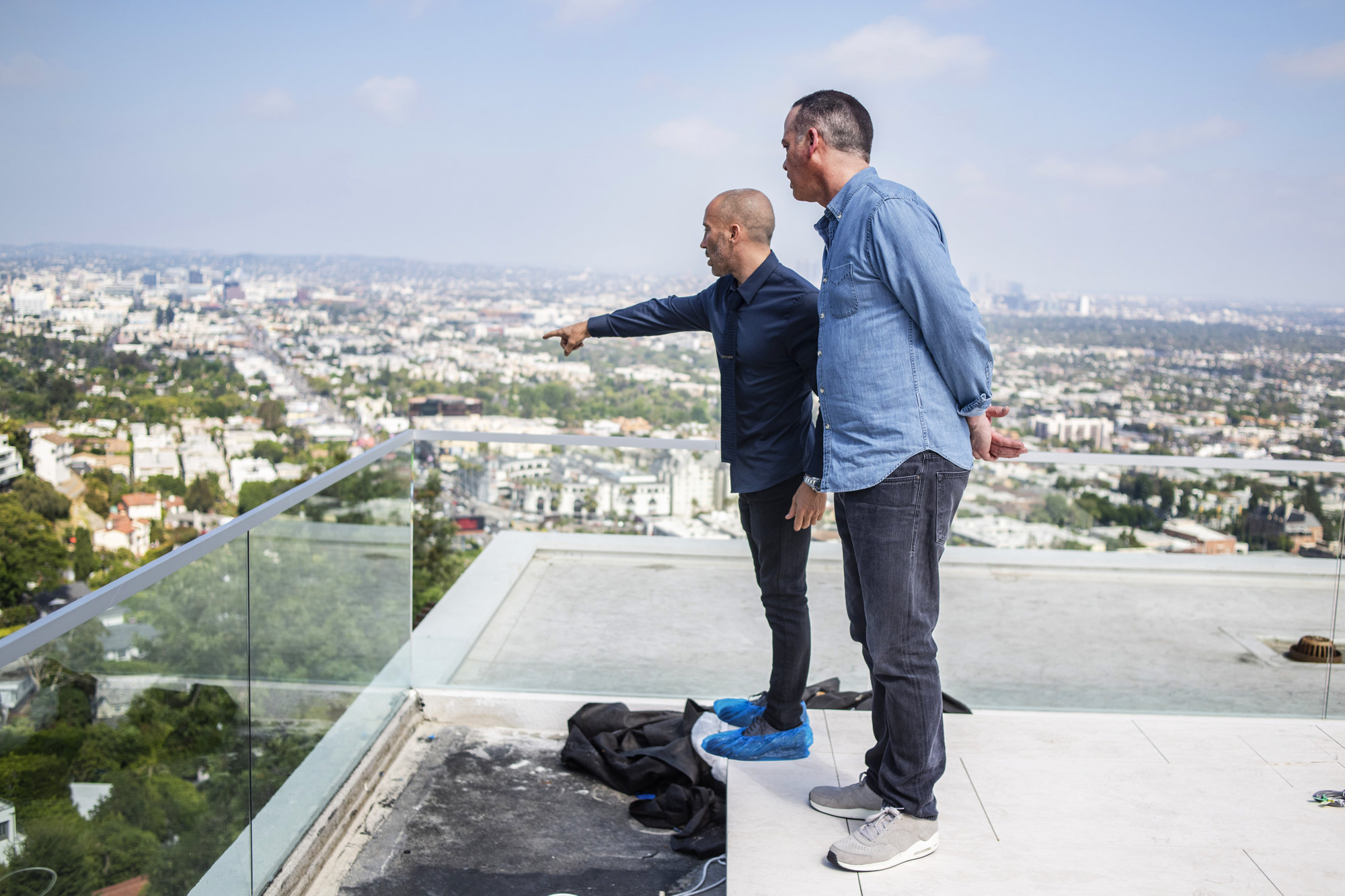
DiVello’s thesis on how to make a good reality show is deceptively simple: just tell a really good story. “In a traditional scripted world, the same thing applies. It always comes down to the story.” But, of course, you have to set up a few “bumpers” as DiVello calls them, so that story plays out in a way you can somewhat predict, and so your characters react in a way that viewers will care about. “[There’s] the whole pinball analogy and how you design the shows, which is like creating the perfect pinball machine,” Skyler Wakil, a supervising producer of Selling Sunset, told me. “And then, throwing the players in there and see how they bounce around.”
In addition to a good story, there are, of course, other requirements. First, above all, the show has to be pretty. “You want it to look as beautiful as possible,” he said. “There’s always budget constraints and I think that’s why a lot of shows look the way they do, because it just costs a lot more money to make the show look the way we make them look. We put all the money on the camera.” Indeed, there isn’t a whiff of low-budget reality TV in any of DiVello’s shows. No shaky camera, no ugly-crying, no wine or fist throwing.
And then, of course, you need to cast just right. “Casting is an art,” DiVello said. “The women are all likable. I think that you can find a little bit of yourself in every one of them, which I like.”
“The women are all likable. I think that you can find a little bit of yourself in every one of them, which I like.”
Is the main cast of Selling Sunset likable? Sure. It just depends on what you like. There’s Chrishell Stause, the protagonist of the show and the “Lauren” of the group, who radiates a saccharine level of sweetness in every episode. As the close-knit group sized up their new colleague, the rudest thing they could say about her was that she lives in the Valley. There’s Christine Quinn, the immediate antagonist, whose skin and hair are both the color of ice. There’s also Mary Fitzgerald, one of the more senior agents at Oppenheim, who is engaged to a guy named Romain (pronounced like, yes, the lettuce) who claims to be a pastry chef even though it looks like he’s never ingested a carbohydrate in his life. Maya Vander lives in Miami part time and functions mostly as just a way to air some expository dialogue about one of the other women’s fights. Heather Young has dimples. And there’s Davina Potratz, who wears reasonable wrap dresses to the office and doesn’t seem to relish fights the way Christine does, despite always being in conflict with someone. Jason and Brett Oppenheim, a set of well-dressed twins, run the agency, and both have a kind of exhaustingly confident sexual energy that only men under 5’7” possess. The new seasons also include newcomer Amanza Smith, a former model and now realtor and interior designer. (Amanza is biracial, regrettably making her the only woman of color in the main cast of Selling Sunset, The Hills, Laguna Beach, or The City. Spray tans don’t count.)
Half of the show’s plot revolves around the women looking at homes and trying to sell them. They throw tasteful parties for their listings, show them off to prospective buyers, and drive around in their fancy cars looking for more homes to list. The other half of the show is dedicated to fighting with each other, sometimes about work, but more often about their personal relationships — whether to have children, whether to get married, or how to juggle a personal life and a career. They’re all appropriate problems for a thirtysomething woman to have.
A highlight of Season 1 was when the cartoonishly handsome Romain gave Mary an engagement ring made of synthetic moissanite instead of a real diamond, adding grist to the rumor mill that he’s broke and only dating Mary for her money. Additional season-long tension came from Christine who absolutely hated Chrishell the minute she entered the office for reasons that are both nonspecific and hysterically petty. And then there was Heather, who ruined a home-staging opportunity because she had to take a phone call from her then–long-distance boyfriend who played professional hockey in Europe and who generally sucked.
In Season 2, those tensions are heightened. Heather is upset when the other women suggest she’s moving too fast with her new boyfriend who has children. Mary and Romain get married but he’s still bitter with Davina over comments she made about the engagement ring he bought. And Christine still really hates Chrishell. (If you think that last part is just for the cameras, I can guarantee it absolutely is not; when I brought Chrishell’s name up to Christine, you could almost see her jaw clench so hard her teeth cracked. I still have no idea why.)
If you read my description of Selling Sunset and find it mundane, you’re right. That’s actually pretty typical of a DiVello project: boring on paper, riveting onscreen. It’s easy to take someone like Real Housewives of New Jersey’s Teresa Giudice, give her a glass of wine, and let her loose on a bunch of her “friends.” But making a show about real estate and minor tiffs between a small group of colleagues actually interesting reality show fodder requires a very different skillset. And DiVello clearly has it.

After that initial scouting trip in June, I joined DiVello again in November to witness a few days of shooting, including at a charity event in a Laurel Canyon mansion, and Christine’s wedding dress fitting set at the very expensive Galia Lahav bridal salon for her then-upcoming wedding to businessperson Christian Richard. (Unlike his bride, who is out here liking and commenting on all her Instagram fan accounts, Richard has virtually no online presence.)
In Laurel Canyon, DiVello and the crew didn’t have a clear storyline to follow, but they did have some ideas. “The main priority tonight is Mary and Romain,” DiVello told his crew. “If Mary and Romain go anywhere, we follow them.”
DiVello and the crew had set up a video village in a back room, with a rig of four screens corresponding to all their cameras. Everybody had an earpiece so they could hear what was going on. There was some plotting about how to get certain people to talk to each other and hopefully fight, but the way they went about producing the action was much more subtle than I expected. “We should motivate Mary to talk to Jason,” DiVello mumbled to the crew. It was always “motivate,” never “tell” or “force.”
“We should motivate Mary to talk to Jason,” DiVello mumbled to the crew. It was always “motivate,” never “tell” or “force.”
There was some gentle encouragement from producers for Amanza to talk to Christine, or for Chrishell to explain a fight from earlier in the season to someone else for the sake of getting it on tape. The cameras were actually quite far away from the action, which made it easier for me to understand why the cast might have said things on film that they might later regret.
The source of tension between Mary and Romain wasn’t exactly clear — it sounded like he did something untoward while on a bachelor party trip before they got married — and everyone was waiting for Romain to explain himself, or at least apologize.
“She’s cold, Romain,” DiVello mumbled, watching Mary rub her arms while standing outside near her husband. “Put your arm around her.” Instead, Romain walked past her, icing her out. The crew groaned in knowing pleasure because it was clear how that moment would translate on the show — this hulking man refusing to comfort his wife, a moment so small that anyone else would’ve missed it.
They waited for Mary to tilt her head just slightly so they could catch her face on camera. When she did, DiVello high-fived his crew. “People think we plan this,” he said. “But we don’t.” You just can’t script a woman looking that heartbroken.

Typically, at this point in a profile, you’d learn something about the subject’s personal life, where they came from and who they really are. You won’t here, though, because I couldn’t get it. Profiling someone like DiVello is torture not because he’s unpleasant or difficult (he was delightful — he texted me “Enjoyed the time we spent together this year!!” on New Year’s Day, for Christ’s sake), but rather because he’s just a really good producer. And he knows exactly what to give and exactly what to withhold.
Sometimes this was helpful — he picked empty restaurants for our interviews so my recorder wouldn’t pick up background chatter, he gathered the show’s cast in one room for photography, he perpetually hovered around me to make sure someone brought me a snack or a drink from Starbucks. He bought me my first Popeye’s spicy chicken sandwich! He offered details that he thought might be useful to my story — like pointing out what little micro-fights were happening between the cast that I would’ve missed while focusing on the A-plot on camera — since he knows how to craft one himself.
“Because I make reality, I’m aware of what can be done with what I say.”
But his desire for control was agony when he didn’t want to talk about something, which happened often. He dodged questions by immediately asking for us to go off the record; or he would say something and then ask that it be off the record even though the quotes were often utterly mundane. At one point, when I turned my recorder on, he called me “sneaky” — he required notice and clearance for recording to begin, even though I was clearly there to profile him. He didn’t want me to speak to the cast without him being present. He hid from our cameras when we wanted to take photos of him. He was anxious about how he would come off, as if I was there to trick him into something that he hadn’t agreed to. I couldn’t even get him to tell me how old he is and he didn’t want to tell me where he grew up because his family still lives there.
But his caginess makes sense. His job is to coax out the ugly and unmentionables in other people’s lives, so he’s hyperaware of the risk of getting a bad edit. “Because I make reality, I’m aware of what can be done with what I say,” he told me.
DiVello was tight-lipped in the best of circumstances, but especially so during my final day on set with him last November when events outside of his control seemed to catch him completely off guard.
Christine, in a teal pantsuit with long silver chains braided into her hair, was hosting a “Botox & Burgers” brokers open house at one of her listings, a 4,000-square-foot home sparsely decorated with modern and uncomfortable furniture and Oppenheim-branded wine on the coffee table. She had ordered sliders, but in a nod to her last name, had relabeled them Quinn & Out. A clinician was there to offer free Botox shots for anyone in attendance. DiVello was already stiffly running back and forth between the cast and the video village by the time I arrived. When I asked him if he was okay, he sighed. “Well, you’ve heard.”
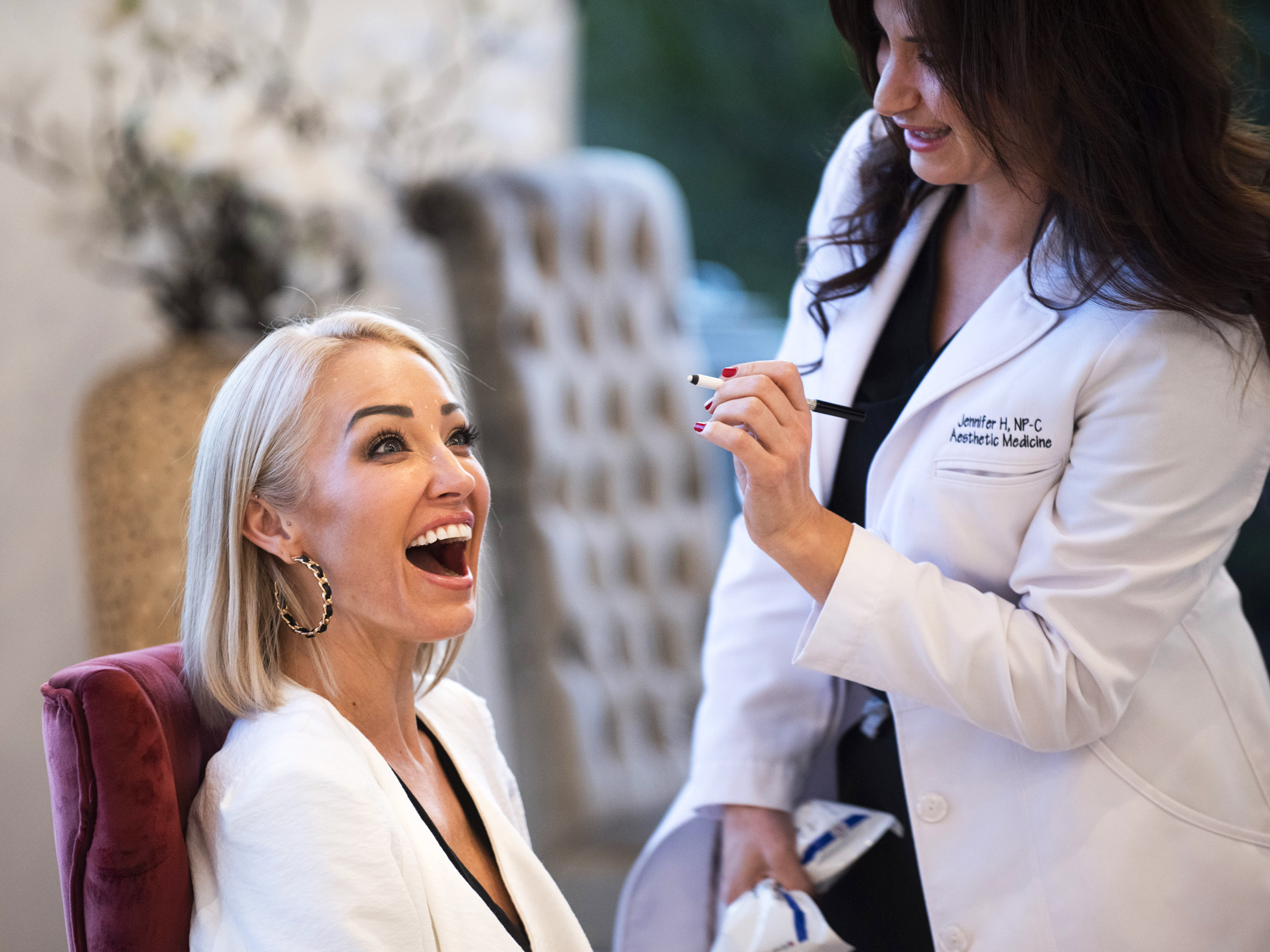
I hadn’t, because I didn’t have a Google alert set for “Selling Sunset + cast + divorce.” I quickly learned that Chrishell’s then-husband, Justin Hartley, of This Is Us fame, had very suddenly filed for divorce, which was throwing everything in disarray. We had seen Chrishell the evening before at a charity event, where she appeared sprightly and light, seemingly not expecting this news herself. She was slated to attend Christine’s Botox & Burgers party but there was no chance she was coming now.
DiVello wouldn’t say much about the divorce and he also wouldn’t let the cast discuss it yet either. He promised Chrishell as much. “I’ve been doing this for a long time. I’ve been dealing with kids in high school, then proms, sex tape allegations,” he told me while his crew was setting up to film the party. “Whenever you assemble a cast like this, you’re asking them to put their trust in you.” I told him this wasn’t typical behavior for a reality show producer; wouldn’t this be a perfect time to capitalize on the drama of your main character? “This isn’t a typical show,” he responded.
A reality TV producer’s role is usually inherently adversarial to the cast — they want to persuade you to share your worst moments and worst tendencies on camera to display to a national audience, or in Netflix’s case, a global audience. But DiVello’s relationship with his cast seems surprisingly warm. There appears to be an affection that goes beyond the fact that he’s signing their checks. They actually seem to trust him with their reputations, and how their most brutally humiliating moments are revealed to the entire world.
“I really appreciated him collaborating with me and finding out what my comfort level was,” Chrishell told me during a follow-up call this May, long after her divorce had already been announced. “This was such a sensitive topic that if left to anyone else’s hands, I don’t know, but I can imagine I wouldn’t have fared as well or I would’ve tried to see if I could’ve legally quit or something. But he really went out of his way.”
Initially, when I first met Christine last November during her dress fitting, with castmate Heather and DiVello nearby, she appeared to agree. “He’s a fucking icon in everything he does,” she said then. “I watched The Hills and Laguna Beach. I thought it was the most gorgeous work, the way everything was shot, and the music. It’s like you’re watching a movie.”
She said something very different, months later, when I called her for our follow-up interview in May.
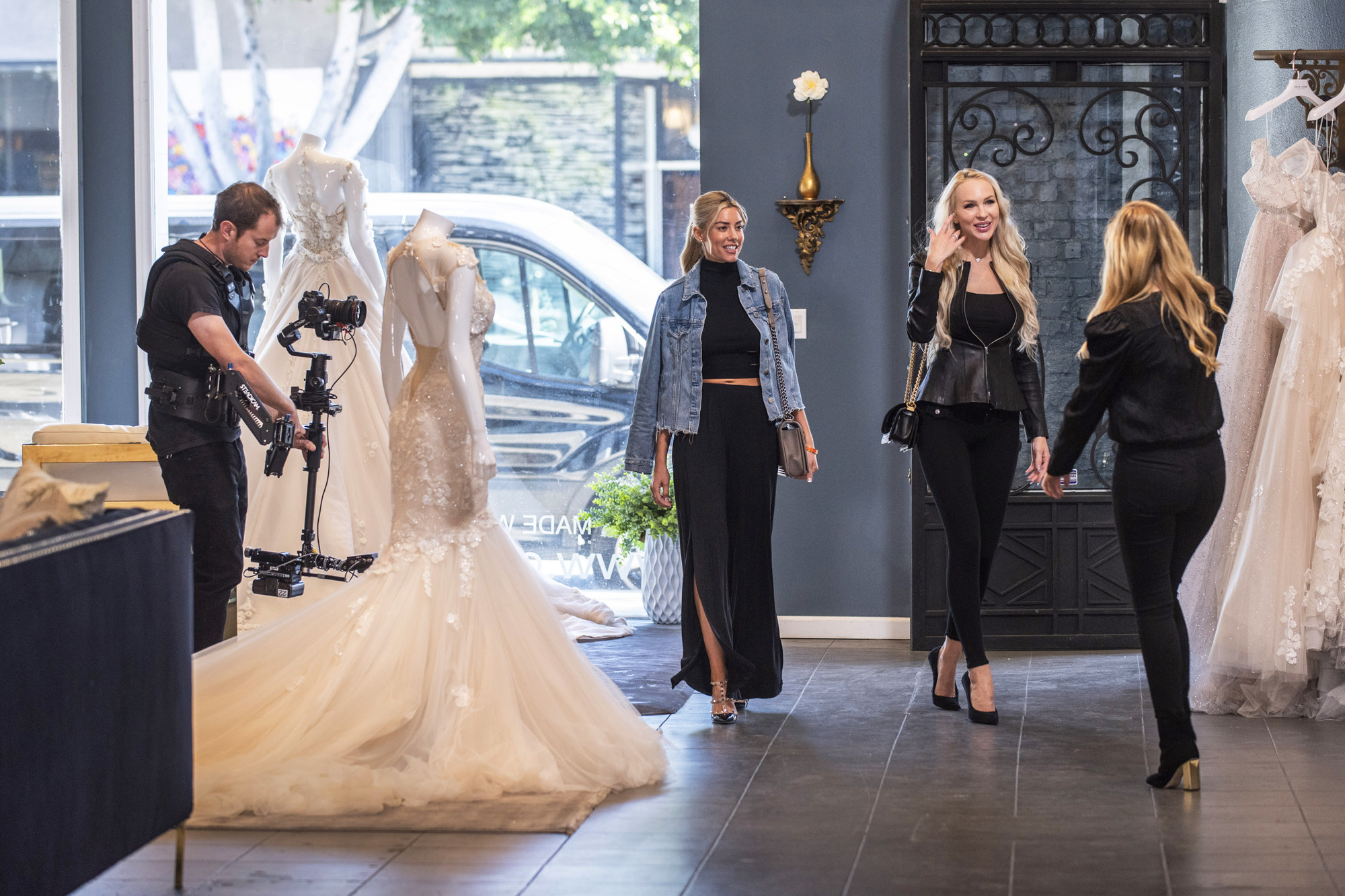
Inevitably, there are people whom DiVello has worked with who do feel somewhat slighted. Heidi Montag and Spencer Pratt of The Hills fame are the most famous examples. They blew up, got megarich, and then became absurdist laughingstocks, getting too much plastic surgery, going on other reality shows to keep their 15 minutes going, and investing in crystals. In 2016, Heidi gave BuzzFeed a laundry list of things from the show that were actually faked, from promotions at work to fights that they were told to drum up, to their own wealth that they were told to downplay. “I think the whole show is unfairly edited!” she told BuzzFeed about The Hills. Worse, Heidi also threatened to sue DiVello for sexual harassment in 2010, claiming he groped her at a group photo shoot. MTV along with the rest of the cast claimed this never happened. The lawsuit was eventually dropped.
“People don’t realize this, it’s all real but you can’t come into this restaurant with cameras. You have to clear it in advance.”
DiVello was open with me about the fact that producers on The Hills did inevitably have to set up some plot arcs. Lauren’s Teen Vogue internship, for example, was arranged by DiVello through a meeting with Anna Wintour. “People don’t realize this, it’s all real but you can’t come into this restaurant with cameras,” he told me. “You have to clear it in advance. You don’t get into Teen Vogue without meeting with Anna Wintour and getting her blessing. Lauren could’ve gotten an internship at like Elle or anywhere, but if Elle didn’t let us shoot there, I was kind of screwed. There’s no television show.”
There are also examples of this on Selling Sunset. Some clients don’t want to be on television, so the crew have to work around unwilling participants. Around Halloween, the producers wouldn’t show Christine driving up to set in her yellow Lamborghini because she had decorated it somewhat ghoulishly. “I wrapped it all in blood like a zombie hit it, and Adam didn’t want to show it — speaking of PC,” Christine said.
“What she’s not telling you is that it looks like they hit a human being,” Divello said. “There’s a sliding handprint on the hood of the car.”
Regardless, DiVello very clearly resents the allegations that The Hills was overwhelmingly faked. How could something so perfect not be real? “She was a find,” he said about Lauren Conrad. “I get so pissed when people said that show was faked. Many, many crew members will attest to how many times I was yelled at by Lauren in the back room at Les Deux because Heidi showed up and we didn’t plan it. And then people were like, ‘Oh, the show’s so fake.’ It’s like, fuck you! I could have been out with my own friends but I was making that show, you know?”
MTV has since rebooted The Hills, and while DiVello says he was offered an opportunity to be a part of the reboot, he declined. And as for Heidi and Spencer, who are perennially talking about how a reality show that ended 10 years ago was faked, DiVello is rather zen about their claims. “You’re always going to have a disgruntled employee at some point in time,” DiVello said. “But then you have somebody like Lauren. Someone like that doesn’t usually complain about being manipulated.” He paused briefly. “I can’t speak for everybody. I have never been on a reality show myself, but I think that we’ll see how I feel after this interview, if I felt manipulated.”
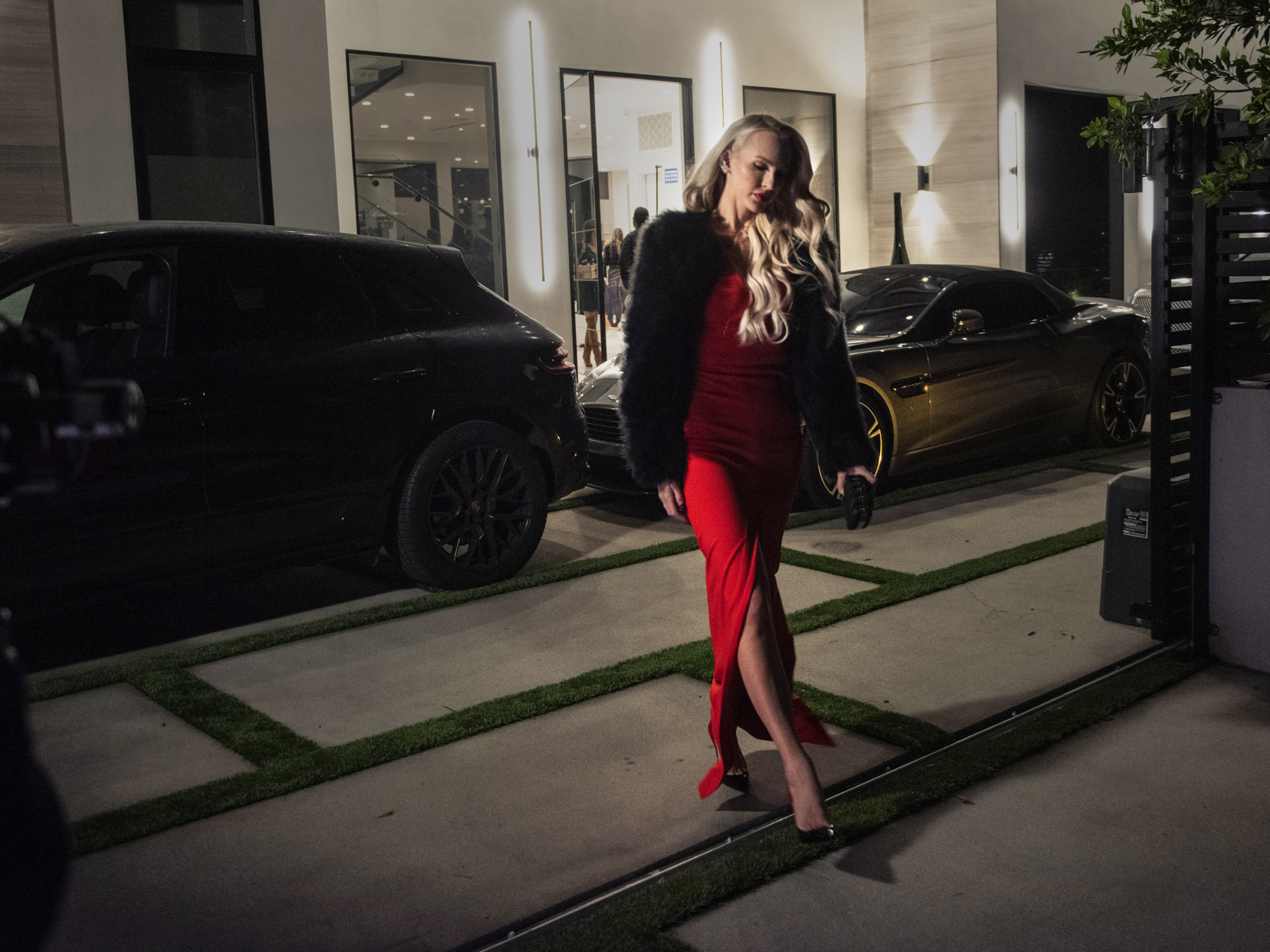
If you want a current DiVello employee who might be “disgruntled,” then you don’t have to look much further than Christine. During our follow-up interview, I asked her how she liked the new season. “There were a few things cut out of order and out of context, but it is what it is,” she said. “I feel a lot better than [in] the first season. I think in the first season I was Frankensteined and heavily edited and manipulated, but this season, I feel good.”
Chief among her issues with the second season, though, was how she says she was produced at the Botox & Burgers party when news about Chrishell’s divorce broke. Christine claimed that the crew told her to check her phone. “They were like, ‘Laugh, laugh.’ I was like, ‘What’s going on? What is this?’ They were making gestures trying to get me to laugh.” Christine said the crew tried to get her to read news of Chrishell’s divorce on camera, which she did, but then says she called Chrishell to give her a heads-up afterward. “I called her and said, ‘I have to tell you what happened on set today. They forced me to do it.’ She was really upset,” Christine added. “Chrishell told Adam and they made us redo the scene. We were all in the office and we’re all looking at our phones and being like, ‘Hey guys, did you see this?’”
“I am the only girl that’s not a robot who’s on that show.”
I was at the Botox & Burgers party and witnessed nearly all the footage being filmed, but I didn’t see the scene Christine claims producers shot. Scenes about Chrishell’s divorce don’t appear in any of Season 2 and are being saved for Season 3, which will premiere later this year, so there’s no way to fact-check Christine’s claims without seeing what actually makes it in the show. Both DiVello and Chrishell also claim Christine’s version of events didn’t happen. “I mean,” DiVello said, somewhat stunned, when I asked him about Christine’s claims, “that didn’t happen. You were there with us. We wouldn’t do that to anybody on our cast. I can’t speak to why she said that.”
Chrishell, too, doesn’t believe Christine’s claims. “I’ve dealt with Christine for a long time and you have to take everything she says with a grain of salt,” she told me on the phone last week. “I’ve spoken to production about this and at first it was upsetting but their side of the story is obviously very different, and I have to go with this. Her track record is not great.”
Despite being the villain — or, according to her, getting the villain edit — for all of Season 1 and…all of Season 2, Christine still doesn’t want to take full responsibility for how she might be coming across. “I think [DiVello] is immensely talented and I think he’s very creative. Does he have a way of getting information out of people and getting people to do what they don’t want to do?” she said. “Absolutely. That’s why he’s so successful.”
During my conversation with Christine, I pointed out that she was being much more candid than she had been during her November wedding dress fitting in LA, a conversation DiVello witnessed. “I’m interesting when I’m not sitting 6 inches next to Adam DiVello, who’s not getting me to shut up,” she said. “I am the only girl that’s not a robot who’s on that show, I’m the only girl who cannot be contained and told what to do, and he knows that. He hates me and he loves me at the same time.”
But just because she’s beautiful, and rich, and generally unguarded, doesn’t mean she’s beyond reproach or immune from regret about saying too much. Three hours after our call, wanting to do some backpedalling, Christine texted me: “Hey Adam just called me. Can you call me when you get a chance?”
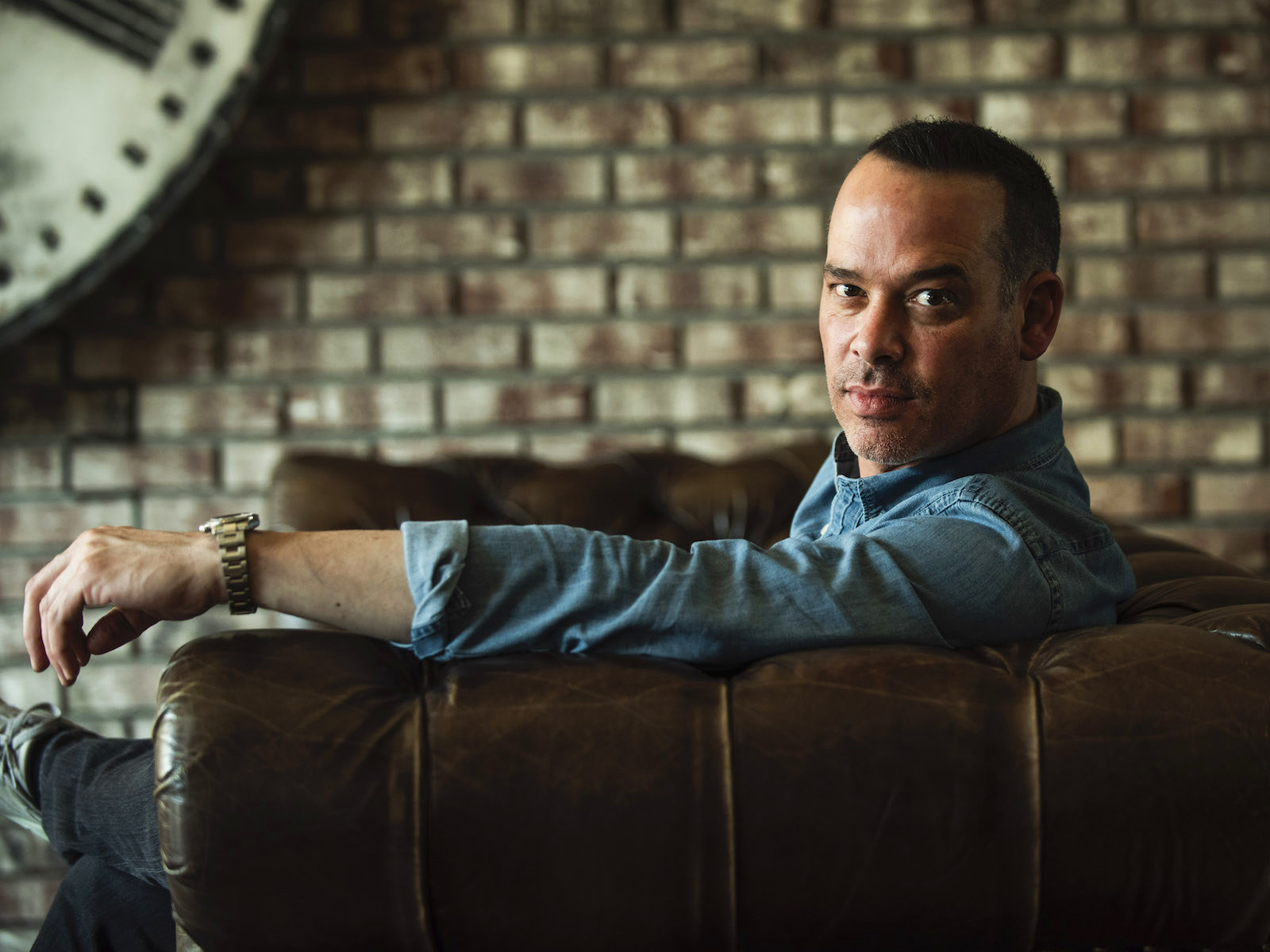
A lot has changed for DiVello’s productions since I talked to him in person last year. The coronavirus has obviously made it hard to figure out how to film, but he’s still out pitching new projects, including a scripted project and a cooking show. Season 3 was filmed together with Season 2 months before the pandemic started and is currently being edited. A fourth season has yet to be approved, but regardless, the pandemic will force DiVello to change how he approaches another season. “If we were to come back, you know, with a lot of unscripted series, the crews are much smaller. We don’t have a large footprint,” he said last week.
“People are always looking for reality television for that escapism.”
The bigger issue, frankly, might be the effects of the inevitable recession; the last recession undoubtedly created a reality television boom in the late 2000s. Back then, we were all looking for something aspirational to watch; the same is true now, but Selling Sunset and arguably all of DiVello’s shows are dependent on rich people staying rich and buying wildly expensive things on television. Recessions don’t necessarily destroy the housing market — especially for the über-rich — but they can affect it. Regardless of how the economy is doing, however, there will always be people looking for distraction and an escape from their everyday lives.
“People are always looking for reality television for that escapism,” DiVello said. “If the Oppenheim Group suffers from this, then that’s a story we’ll tell. It’s an unfortunate situation that we’re in, but it’s one we will follow if given the chance and we’ll show the real outcome.” He’s starting to think about working with influencers for future projects, but has a few reservations. “A lot of those people that are influencers, they want to be famous,” he said. “For what we want to do, it’s not as organic. Nowadays, they’ll do those shows just to get the followers.”
The brilliance of DiVello’s shows is that he casts people normal enough to be considered regular, but not so normal that they don’t belong on television. In a reality programming landscape where Tana Mongeau gets an MTV series on YouTube, DiVello is still banking on unknown, offline, “average” girl talent.
Whatever his post-pandemic productions will look like, his formula remains steadfast and effective. Netflix is typically evasive about the show’s success and ratings, as they are with most of their programming, but it does seem like a real vote of confidence that Selling Sunset is already on its way to its third season. Meanwhile, in the tangible world, DiVello can’t stop producing the moment, whatever that moment may be. The smaller it is, the better he can see it, tease it out, and make it mean something much bigger.
At one of our lunches together, DiVello referenced a moment earlier in the day when I refused a snack to avoid making a mess of my lipstick. He pointed out how perfect that scene could be. “You’re like, ‘I don’t want it all over my face.’ And then it airs on television and people are like, ‘Aww, I love her!’” he said. “And all of a sudden, you’re really likable. And nobody wrote that.”●
